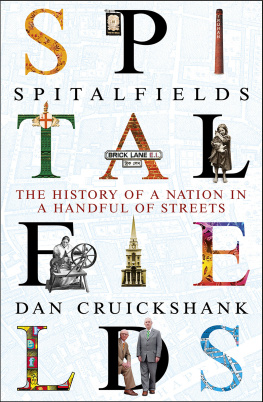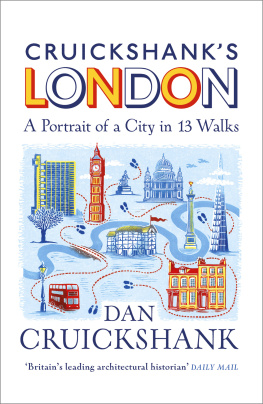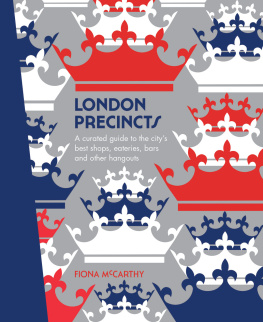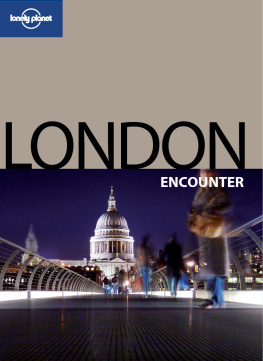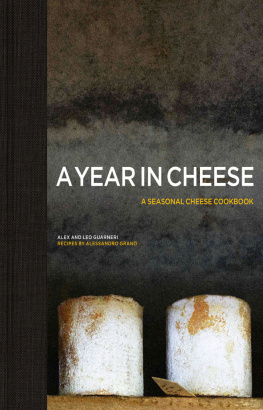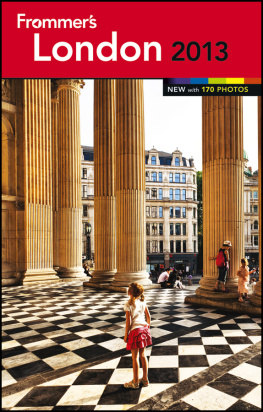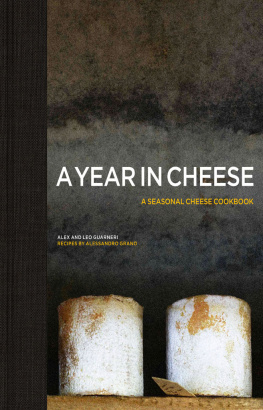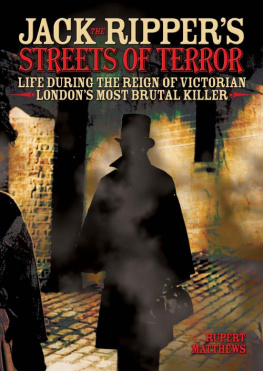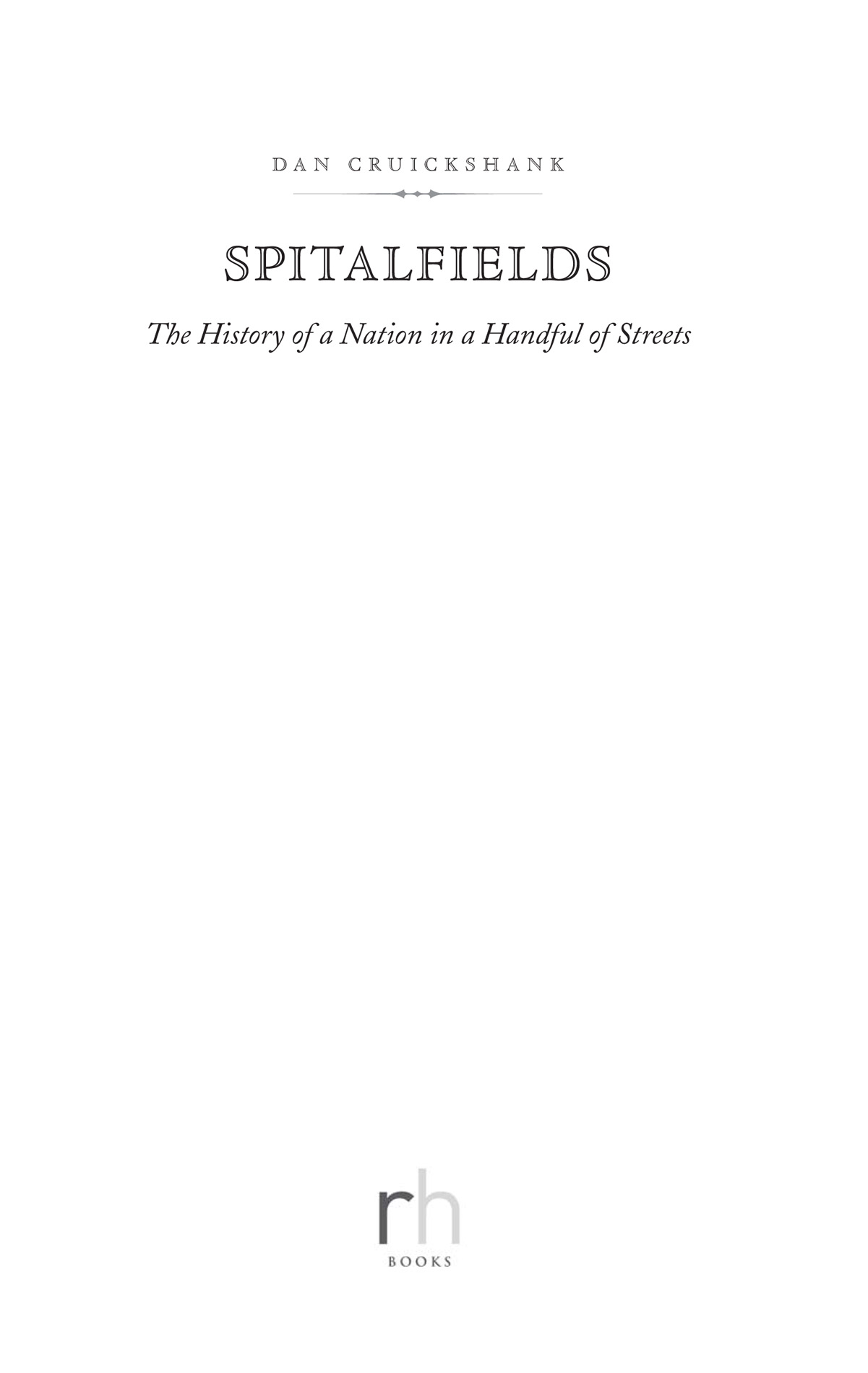This ebook is copyright material and must not be copied, reproduced, transferred, distributed, leased, licensed or publicly performed or used in any way except as specifically permitted in writing by the publishers, as allowed under the terms and conditions under which it was purchased or as strictly permitted by applicable copyright law. Any unauthorized distribution or use of this text may be a direct infringement of the authors and publishers rights and those responsible may be liable in law accordingly.
Epub ISBN: 9781448164561
Version 1.0
Published by Random House Books 2016
1 3 5 7 9 10 8 6 4 2
Copyright Dan Cruickshank 2016
Cover images Alamy and Getty Images. Child with cat by Horace Warner Religious Society of Friends (Quakers) in Britain.
Dan Cruickshank has asserted his right under the Copyright, Designs and Patents Act, 1988, to be identified as the author of this work.
First published by Random House Books in 2016
Random House Books
The Penguin Random House Group Limited
20 Vauxhall Bridge Road, London, SW1V 2SA
www.penguin.co.uk
Random House Books is part of the Penguin Random House group of companies whose addresses can be found at global.penguinrandomhouse.com
A CIP catalogue record for this book is available from the British Library
ISBN 9781847947079
THIS BOOK HAS been many years in its conception and nearly a decade in its execution. I first got to know Spitalfields well in the early 1970s, when I started to explore its then generally desolate and abandoned streets, and to photograph its decaying historic buildings that, it seemed at the time, stood very little chance of survival. In the mid 1970s a group of friends and I became involved in a campaign to attempt to stop what seemed its inevitable obliteration, forming the still-thriving Spitalfields Historic Buildings Trust in 1976. The idea to write this book emerged gradually, partly as a result of research undertaken during many, often desperate and hard-fought conservation campaigns, and partly as a result of buying an early-eighteenth-century Spitalfields house nearly forty years ago, and then repairing and living in it. Also, strange as it might seem, my desire indeed obsession to explore in detail the history on my own doorstep has been stimulated by years of writing about architecture around the world. Its easy to be entranced by remote and distant places, but it gradually dawned on me that the architectural, social and cultural history of Spitalfields is as rich and as extraordinary as that found in more apparently exotic locations.
There have been many detailed and very useful books written on the buildings of Spitalfields. But I still feel there is room for another, particularly one that seeks to tell the areas extraordinary story in the wider context of the nations history. And relating that story seems especially urgent now, since Spitalfields is on the cusp of dramatic and speedy change that could result in its special character being erased and our ability to imagine its past vastly reduced.
I have been fortunate, over the years, to have met many remarkable, sometimes unlikely, people with Spitalfields stories to tell. I have also received generous assistance from a wide range of historians, archaeologists, librarians and London chroniclers who have proved endlessly willing to share their insights and discoveries. My friends and neighbours, too, have helped me, invariably indulging my curiosity by making their historic homes available on an almost regular basis for minute scrutiny.
Id like to thank the following some, sadly, no longer living without whom this book would not have been possible in its published form. First there is the team from Museum of London Archaeology (MOLA) notably Chiz Harwood, Nigel Jeffries and Chris Thomas whom I first met during the 1990s when they were excavating the site of the north precinct of the former Spitalfields Priory and the Old Artillery Ground and to whom I am most grateful for their generosity in sharing and explaining their discoveries. Their 2015 publication, The Spitalfields Suburb, 1539c.1880, is a truly outstanding publication that, along with the 1957 Survey of London volume dealing with Spitalfields and Mile End New Town, has proved to be one of my Bibles during the process of researching and writing this book. I also want to give special acknowledgement to the support and insights over the decades that I have received from my colleagues on the Spitalfields Trust, notably Colin Amery, Douglas Blain, Andrew Byrne, Francis Carnwath, John Chesshyre, Mark Girouard, Charles Gledhill, Gareth Harris, Marianna Kennedy (whom Id also like to thank for her generosity in allowing me to reproduce Marshall Sissons 1920s photographs of long-lost houses on the Old Artillery Ground), Barra Little, Ian Lumley, Richard MacCormac, Elizabeth and Peter McKay, William Palin, Caroline Roughton, Patrick Streeter, Tim Whittaker and Oliver Leigh-Wood.
Special thanks also to Stefan Dickers at the Bishopsgate Institute for the help he has given me with my research; Sandra Esqulant for her tireless enthusiasm and generosity of spirit; Marenka Gabeler for her photographs and selfless support through the years; the Gentle Author, creator of the informative Spitalfields Life website, who has shared information with me in a most generous manner and guided me to fruitful areas of research; Gilbert and George long-term residents of Fournier Street who have repaired two houses in exemplary manner and allowed me to benefit from their discoveries; Peter Guillery for his pioneering work on the humble Georgian buildings of Spitalfields and Bethnal Green; Robin Gwynn for information about Huguenot Spitalfields; James Howett, who has made and shared many remarkable discoveries about the history and buildings of Spitalfields; Phillip Lucas for information about the eighteenth-century home and its fittings; Jerry White, an old Spitalfields friend, whose extensive and scholarly writing on eighteenth- and nineteenth-century London and on the Rothschild Buildings in particular have provided me with insights and essential information; Sarah Wise to whom I am indebted for her pioneering work on life in the nineteenth-century East End; and Bella and Alexander Cruickshank who have given me the determination to complete what seemed, at times, a most daunting project.
Thanks also to: Ben Adler, Geoffrey Archer, Nick Barratt, Mary Bayliss, Jenny and Oliver Black, Neil Burton, Dave Chesterton, Kevan Collins, Basil Comely, Adam Dant, Paul Gazerwitz, Mariga Guinness, Julian Harrap, Nick Hedges, Julian Humphries, Jocasta Innes, Eleanor Jones, Theo Jones, Santokh Kaulder, Tarik Khan, Martin Lane, Chris Legg, Pat Llewellyn, David Milne, John Nicholson, Heloise Palin, Olga Pavlova, Marco Pensa, Hugh Petter, Lisa Reardon, Raphael Samuel, Dennis Severs, Susie Symes, Taylor Thomson, Christine Waite, Charlie de Wet, Jeanette Winterson, Donna de Wit, Peter Wyld, and Simon Young.
Finally I thank my agents Charles Walker and Christian Ogunbanjo, and my publisher Nigel Wilcockson for his unwavering and cheerful support and skilled transformation of a vast and unruly manuscript into a finished book, a task in which he has been ably assisted by Rowan Borchers and Lynn Curtis.

